Evolutionary Ecology
The department of Evolutionary Ecology gathers complementary skills in behavioural ecology, population dynamics, population biology, community ecology, and methodology (statistics and modelling). The research done in the department aims at studying how animal species evolve in a changing world by understanding the causes of the evolution of traits, adaptations and interactions. For that, we consider different levels of organization from individuals to populations and communities. Because organisms cannot be considered isolated from other biotic factors, we consider pathogens but also competing species within communities.
We study how individuals adapt to their environments that are largely impacted by anthropic pressures, and how life history traits and behaviour evolve in response to these pressures. Although we mainly focus on phenotype, we more and more consider the mechanistic link between the genotype and the phenotype. We develop the theoretical framework of our discipline through a conceptual and modeling approach. In parallel, we test hypotheses that arise from theoretical predictions through experimental, comparative and observational approaches on different biological models (insects, birds, mammals). Experimental approaches are developed in the laboratory (insect model) and in natura (bird, insect and mammal models). Observational and comparative research is mainly concerned with vertebrates. Our approaches are also, and increasingly, interested in the mechanisms of adaptive responses. In addition to the classical approaches of demographic analysis and trait change, methods of ecophysiology, chemical ecology and molecular biology are used.
Our department hosts several long-term studies of wild populations of different species. These long-term studies offer a valuable way to understand how biotic and abiotic factors affect individuals’ life history traits, and the functioning of populations in natura. Five populations of mammalian species are thus monitored for several years (more than 40 years on roe deer, 30 on Alpine marmots, 25 years on cats, 16 years on zebras, and 20 years on impala). Two of our study sites (La Sassière in Vanoise National Park (Alpine marmots) and Hwange National Park) have been certified as “Site d’Etude en Ecologie Globale” (SEEG), and two (ZA “Hwange” and ZA “Antarctic and sub-Antarctic”) were certified as “Zone Atelier” by the CNRS.
The department of Evolutionary ecology is also largely involved in training activities. Lastly, we also have strong socio-economic relationships. Indeed, because we address questions of major societal interest (global warming, public health) we tightly collaborate with socio-economic partners (Office Français de la Biodiversité, Vanoise National Park, Hwange National Park in Zimbabwe, Office National des Forêts, etc.) and participate to general public and media events.
Publications
Display of 841 to 870 publications on 2483 in total
Cushion-plant protection determines guild-dependent plant strategies in high-elevation peatlands of the Cordillera Real, Bolivian Andes
Perspectives in Plant Ecology, Evolution and Systematics . 30 : 103-114
Journal article
see the publicationBrucella melitensis shedding in Alpine ibex: age and sex heterogeneity
13th EWDA Conference .
Poster
see the publicationBrucellose des bouquetins du massif du Bargy: des secteurs plus ou moins impactés en lien avec la structuration socio-spatiale des femelles
Faune Sauvage . ( 320 ) : 45-51
Journal article
see the publicationAnalyse génétique et immunogénétique de la population de bouquetins (Capra ibex) du massif du Bargy en lien avec l’infection brucellique
Journée AEEMA .
Conference paper
see the publicationAvis de l’Anses relatif à « l’évaluation du risque de diffusion de la Peste Porcine Africaine associé à une diminution de la zone d’observation renforcée en France »
: 14 p.
Report
see the publicationImpact of currently marketed tampons and menstrual cups on Staphylococcus aureus growth and TSST-1 production in vitro
Applied and Environmental Microbiology . 84 ( 12 )
DOI: 10.1128/AEM.00351-18
Journal article
see the publicationAvis de l'Anses. Second avis du GECU PPA. Analyse, réponses au 2ème lot de questions et conclusions du GECU "relatives à l'évaluation des mesures de prévention et de gestion mises en place afin de prévenir et maîtriser le risque de diffusion de la
: 39 p.
Report
see the publicationAvis de l'Anses relatif à l'évaluation des mesures de prévention et de gestion mises en place afin de prévenir et maîtriser le risque de diffusion de la PPA sur le territoire national français
: 16
Report
see the publicationQuantitative Outcomes of a One Health approach to Study Global Health Challenges
EcoHealth . 15 ( 1 ) : 209-227
Journal article
see the publicationAnal scent gland secretions inform on sexual maturity, sex and social status in the Alpine marmot, Marmota marmota (Rodentia: Sciuridae): a role in intrasexual competition in cooperative breeders?
Biological Journal of the Linnean Society . 125 ( 2 ) : 229-239
Journal article
see the publicationCattle transhumance and agropastoral nomadic herding practices in Central Cameroon
BMC Veterinary Research . 14 ( 1 ) : 214
Journal article
see the publicationAssessing the Economic Impact of Vaccine Availability When Controlling Foot and Mouth Disease Outbreaks
Frontiers in Veterinary Science . 5
Journal article
see the publicationDrivers of Live Cattle Price in the Livestock Trading System of Central Cameroon
Frontiers in Veterinary Science . 4
Journal article
see the publicationPlant Strategies along Resource Gradients
The American Naturalist . 192 ( 3 ) : 360 - 378
DOI: 10.1086/698600
Journal article
see the publicationFacilitation- versus competition-driven succession: the key role of resource-ratio
Ecology Letters . 21 ( 7 ) : 1010-1021
DOI: 10.1111/ele.12966
Journal article
see the publicationDrivers and demographic consequences of seasonal mass changes in an alpine ungulate
Ecology . 99 ( 3 ) : 724-734
DOI: 10.1002/ecy.2141
Journal article
see the publicationScientific Opinion on the state of the art of Toxicokinetic/Toxicodynamic (TKTD) effect models for regulatory risk assessment of pesticides for aquatic organisms
EFSA Journal . 16 ( 8 )
Journal article
see the publicationFit Reduced GUTS Models Online: From Theory to Practice
Integrated Environmental Assessment and Management . 14 ( 5 ) : 625-630
DOI: 10.1002/ieam.4061
Journal article
see the publicationNew Insights to Compare and Choose TKTD Models for Survival Based on an Interlaboratory Study for Lymnaea stagnalis Exposed to Cd
Environmental Science and Technology . 52 ( 3 ) : 1582-1590
Journal article
see the publicationThe One health concept : 10 years old and a long road ahead
Frontiers in Veterinary Science . 5 : 14
Journal article
see the publicationCoexistence of two sympatric cryptic bat species in French Guiana: insights from genetic, acoustic and ecological data
BMC Evolutionary Biology . 18 ( 1 ) : 175
Journal article
see the publicationConservation et écologie du Grand rhinolophe: Que nous apprennent les analyses moléculaires?
17. Rencontre Nationale des Chauves-Souris .
Conference paper
see the publicationThe ground plot counting method: A valid and reliable assessment tool for quantifying seed production in temperate oak forests?
Forest Ecology and Management . 430 : 143-149
Journal article
see the publicationLandscape genetics matches with behavioral ecology and brings new insight on the functional connectivity in Mediterranean mouflon
Landscape Ecology . 33 ( 7 ) : 1069-1085
Journal article
see the publicationSocial behaviour as a predominant driver of sexual, age-dependent and reproductive segregation in Mediterranean mouflon
Animal Behaviour . 136 : 87-100
Journal article
see the publicationCoping with change in predation risk across space and time through complementary behavioral responses
BMC Ecology . 18 ( 1 )
Journal article
see the publicationMigrating ospreys use thermal uplift over the open sea
Biology Letters . 14 ( 12 ) : 20180687
Journal article
see the publicationProcess-based vs. ad-hoc methods to estimate mortality using carcass surveys data: A review and a note about evidence complacency
Ecological Modelling . 384 : 111-118
Journal article
see the publicationThe ground plot counting method: A valid and reliable assessment tool for quantifying seed production in temperate oak forests?
Forest Ecology and Management . 430 : 143-149
Journal article
see the publicationSame habitat types but different use: evidence of context-dependent habitat selection in roe deer across populations
Scientific Reports . 8 ( 1 )
Journal article
see the publication
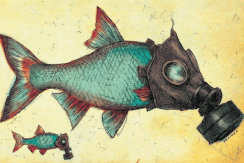
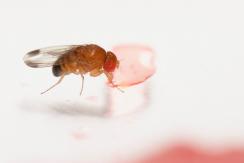
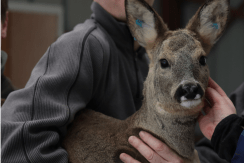
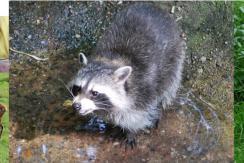
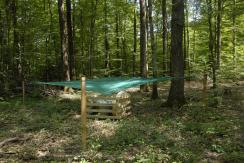
You also, comment on this article